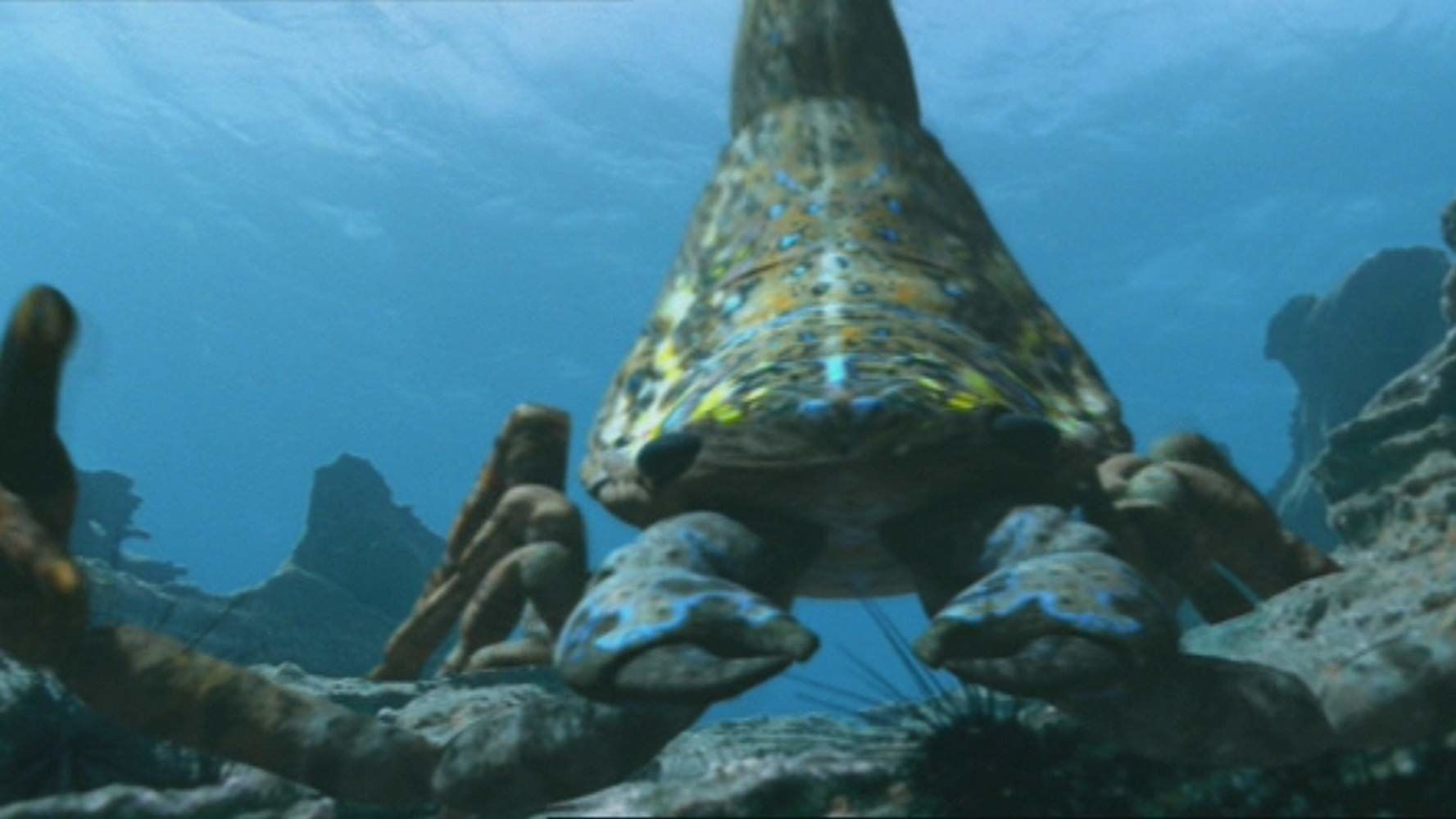Walking with Monsters (Séta a szörnyekkel) 1x1

Vetítés: 2005.12.08 22:00, csütörtök
530 million years ago: Cambrian Place: Chengjiang, China Oxygen Content: 30% below today Hazards: world's first super predator
The first episode begins with an illustration of the giant impact hypothesis: approximately 4.4 billion years ago when the Earth was formed, it is conjectured that a planet-like object referred to as Theia collided into the early Earth, dynamically reshaping the Earth and forming the moon. The episode then jumps ahead to the Cambrian Explosion, showing the first diversification of life in the sea. Strange arthropod predators called Anomalocaris feed on trilobites, and fight with each other, whereupon the wounded loser is attacked by a school of Haikouichthys, described as the first vertebrate.
Animals: Anomalocaris · Haikouichthys · Redlichiida (unidentified trilobite) · Jellyfish
418 million years ago: Silurian Place: South Wales, UKOxygen Content: 30% below today Hazards: giant scorpions
The segment moves on to the Silurian period, where Haikouichthys has evolved into the jawless-fish Cephalaspis. The marine scorpion Brontoscorpio pursues a Cephalaspis but falls victim to the giant eurypterid Pterygotus, whose young feed on the smaller scorpion's body. Later a shoal of Cephalspis migrate into the shallows to spawn, navigating via memory thanks to their advanced (for the time) vertebrate brains. As they cross a shallow embankment, they are ambushed by several Brontoscorpio which are depicted as the first animals capable of walking on land. Several fish are killed but the majority slip past the feasting scorpions and arrive at the spawning site. One scorpion misses this feeding opportunity due to having to molt its skin.
Animals: Cephalaspis · Brontoscorpio · Pterygotus · Cameroceras (identified as Orthocone) · Sea sponge · Sea urchin
360 million years ago: Devonian Place: Pennsylvania, USA Oxygen Content: 20% below today Hazards: giant killer fish
A short sequence depicts Cephalaspis evolving into Hynerpeton (bypassing the lobe-finned fish stage), amphibian-like tetrapods, who now hunt their arthropod contemporaries which have shrunk. Though capable of terrestrial movement, Hynerpeton have to remain near water to keep moist and reproduce. A lone male Hynerpeton hunting underwater is threatened by predatory fish, at first by a Stethacanthus which is eaten by a two-ton Hyneria that chases the amphibian out of the water. After seeing off a rival during the night, the male finds a receptive female at dawn and the two mate at the water's edge. They are ambushed by the Hyneria, which beaches herself in the process, but then uses her fins to drag herself ashore and grab the fleeing male. Despite his untimely death, the Hynerpeton eggs were successfully fertilized and sink into the water to develop. A sequence depicts them acquiring hard shells as the first reptiles evolve, but as the offspring leave their nest, those still hatching are left at the mercy of a giant spider, foreshadowing the return of the arthropods.
Animals: Hynerpeton · Hyneria · Stethacanthus (identified as primitive shark) · Scorpion · Petrolacosaurus
